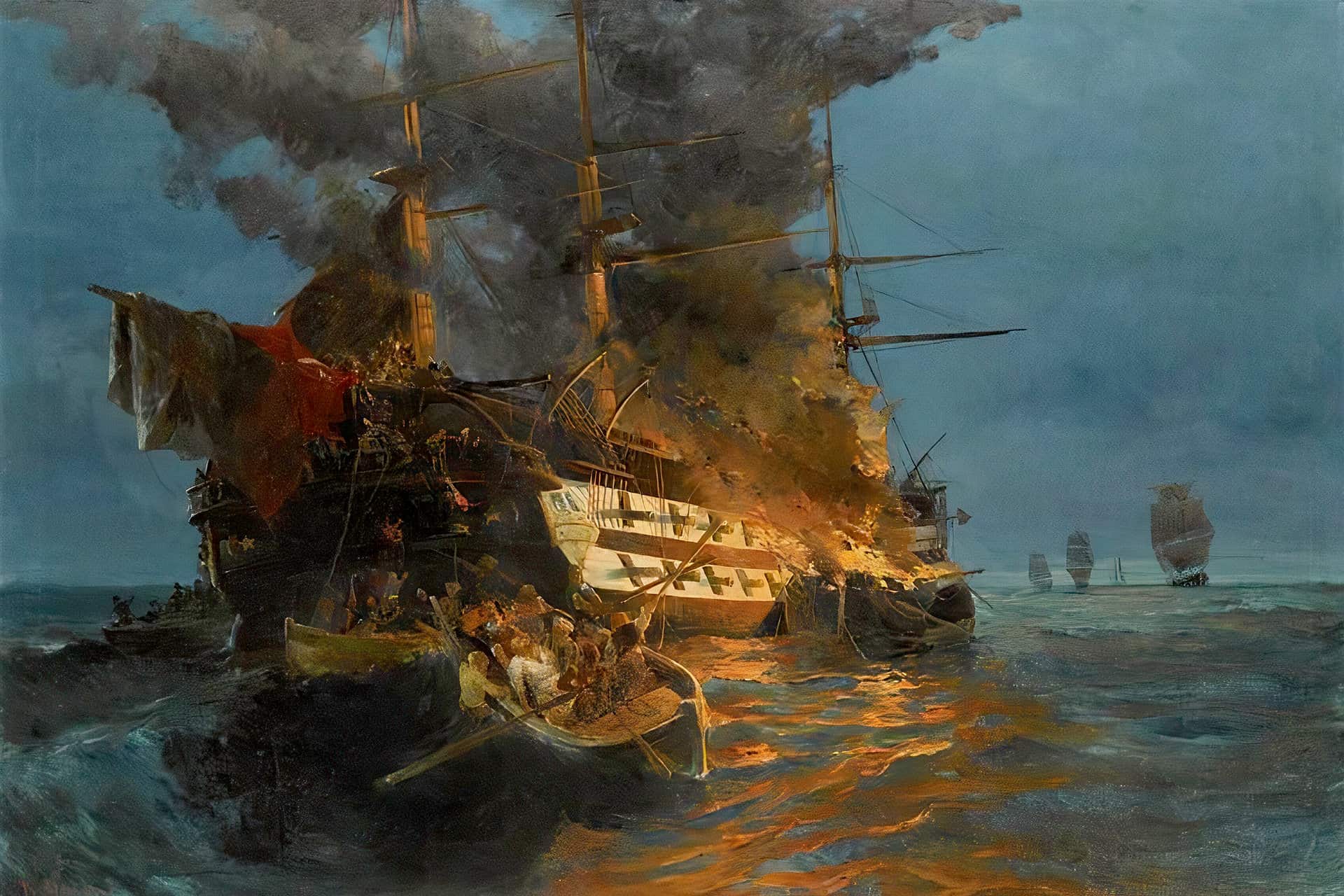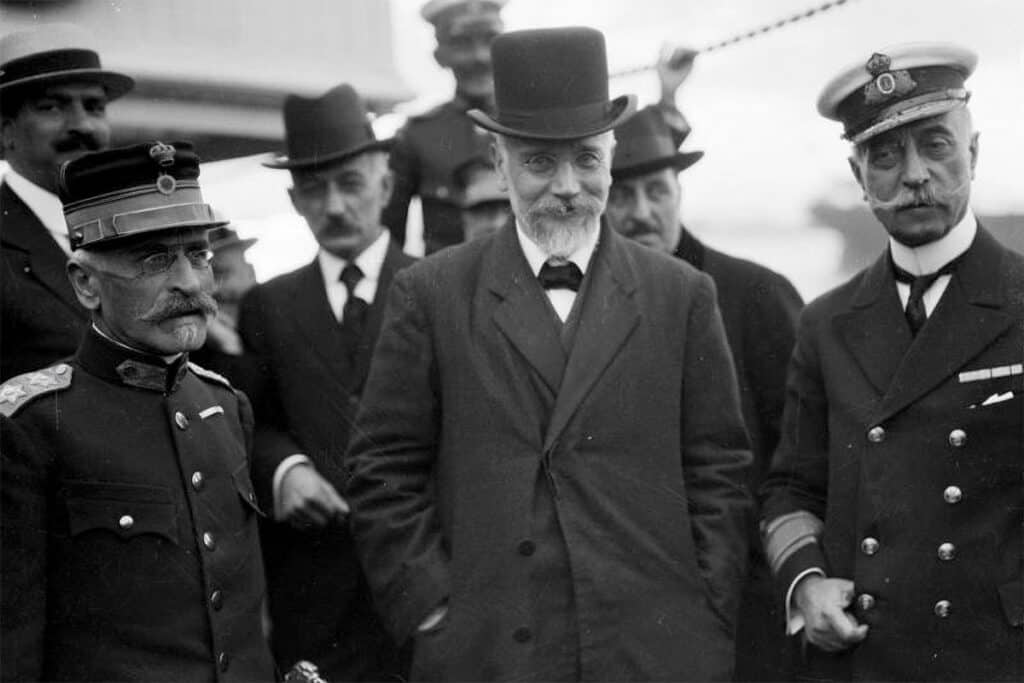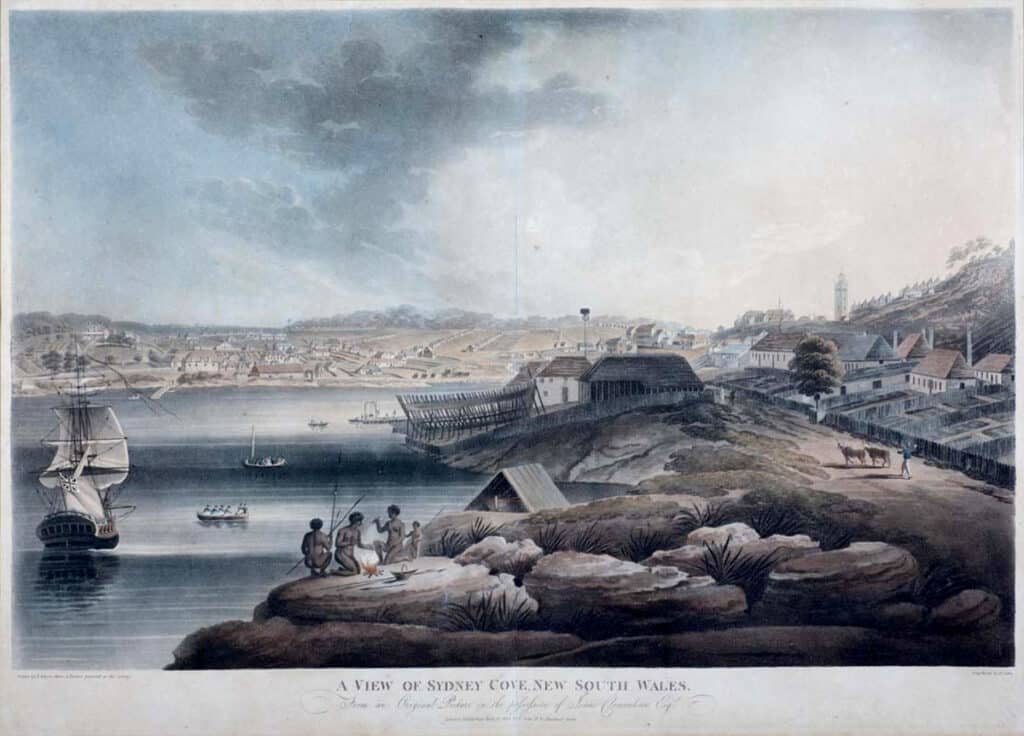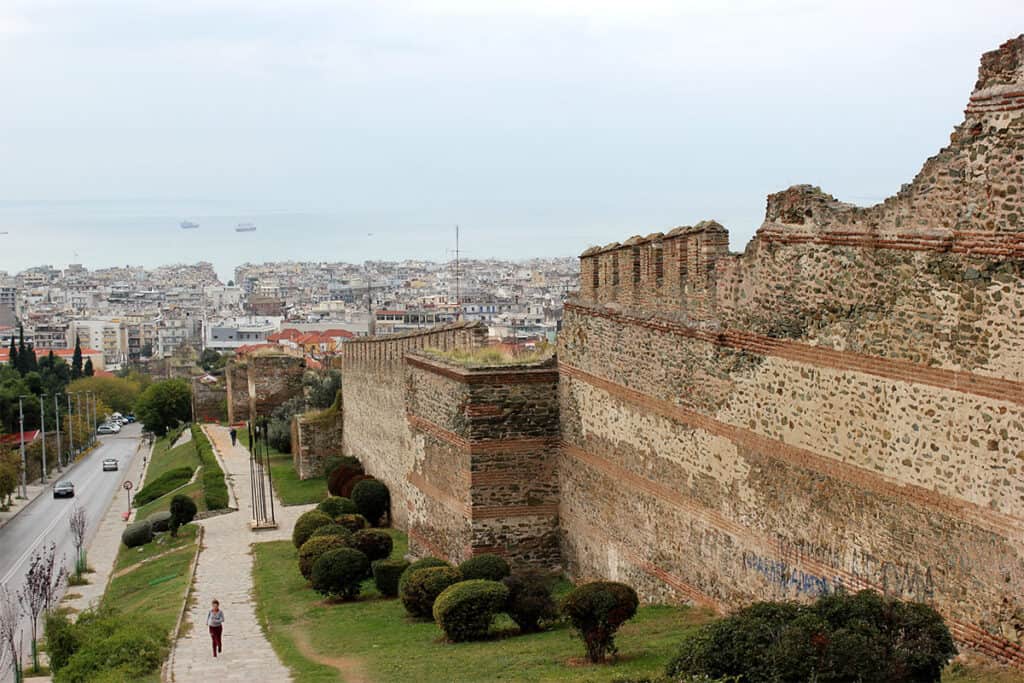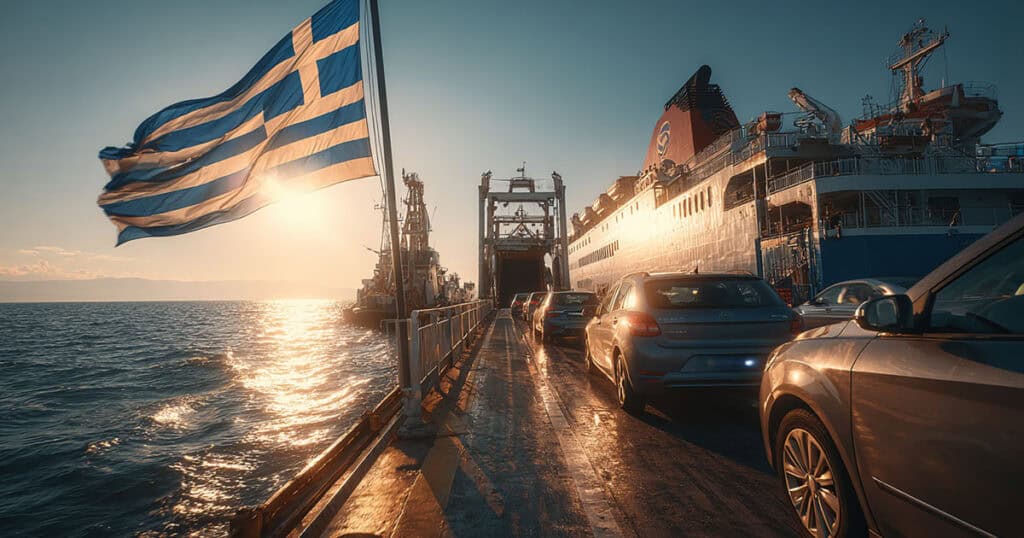I try not to make parallels to the Ancients when talking about Modern Greece; it is a cliché too worn, a dividend too often presented for payment. And yet, allow me a bit of hypocrisy when I say that the naval prowess of the Greeks, and their skillful use of asymmetry on the waves, is clearly an unbroken progression from the Ancients to the Byzantines to the Revolutionary Era.
The prowess of Athenians at sea, besting the Persian invaders at Salamis and elsewhere, is well known and supported a colonial expansion through much of the Mediterranean and the Black Sea littorals. It was the Byzantines, the Medieval Greeks, who perhaps best illustrated the asymmetric pyro-weaponry that their distant descendants would use yet again. The Byzantines developed ygro pyr (humid fire or pyr thalassion, or Greek Fire) a substance fired from huge siphons or catapults, that burned on the water and torched many an enemy of Byzantium to a crisp, not least a huge Arab army and navy that had come to besiege the Queen of Cities, Constantinople. The recipe for this concoction has been speculated, but the closely guarded ingredients were never revealed.

Now that we finished this necessary digression let’s get back to the Revolutionary Era, 1821. In early modern naval warfare, fireships had been used in many naval encounters, as a way for smaller, more nimble fleets to counter large traditional warships with decks of cannon. The technology is simple, and indeed fire as a naval weapon is as old as warfare itself.
Fireships tended to be older, smaller vessels, which were refurbished with combustibles, such as gunpowder and pitch, to be a floating bomb. There was an excess of rigging and sails too might be doused with various materials, both to stoke the flames and to entangle with the target ship. The fireship would have a skeleton crew, among the most skilled and dedicated sailors, together with a small escape ship towed behind the fireship or cut from rigging when needed. Hatches were cut at various intervals to allow for air intake to feed the flames.
While Hydra and its fellow “nautical islands” of Spetses and Psara possessed a large number of ships manned by well-skilled crews, they did not have naval ships in the traditional sense. Many of their merchant ships were armed with cannon; this was the Mediterranean, which was filled with pirate ships, and indeed the Aegean islanders were not above piracy and blockade running themselves, but armed merchantmen, though common in nineteenth-century naval warfare, lacked the punch of frigates. Fireships were the obvious solution for the Greek islanders, as they were easy to procure, and they had the skills and courage to use them effectively.
The proof was in the results. Greek fireships time and again proved decisive in naval encounters, destroying key Turkish naval assets, and, just as importantly, causing panic to Turkish sailors. Beyond the destruction of Turkish ships, the threat of Greek fireships kept the Turks from effective movement in the Aegean and prevented the more active reinforcement of Turkish attempts to defeat the Greek Revolution on the Greek Mainland, which held out in spite of great odds (and plenty of internecine fighting). The pilots of fireships were renowned for their dash, daring, and faith; they even attempted to burn the Egyptian Fleet (allies of the Turks) at Alexandria.
The day of the fireship was ending; even at the end of the Greek War of Independence, steam-powered warships came on to the scene, as well as ironclads a few decades later. The new Greek navy would spend considerable amounts of the state budget to procure the ships needed for the country’s defense and expansion, at times assisted by her Diaspora, most notably in the purchase of the Battle Cruiser Averof, which, commanded by a Hydriot admiral, battered the Turkish fleet in the Balkan Wars, making the land victories against the Turk all the more certain. In this war, too, a bit of the fireship elan remained when another Hydriot, Captain Nicholas Votsis, snuck a torpedo boat into Thessaloniki harbor, at the time still under Turkish control, and sank the Turkish cruiser Feth-i Bülend.
Hydriots honor the legacy of the fireships in the annual Miaouleia Festival, a celebration in Hydra’s beautiful amphitheatrical harbor, which culminates in the burning and fireworks on a small ship. This festival is renowned throughout Greece, and it continued this year—despite the restrictions of the Coronavirus Pandemic. For Hydra’s 2021 Celebrations, to commemorate the Bicentennial of the Greek War of Independence, the festival is sure to be a key event.
Today, the Greek Navy is one of the world’s finest navies, drawing on the skills of a maritime nation and inspiration of three thousand years. Its ships tend to be nimble and smaller, and its tactics asymmetric, as always.
Honor is due.
Cosmos Philly is made possible through the support of sponsors and local partners. If you’d like to become a sponsor or promote your business to our community, get in touch.
